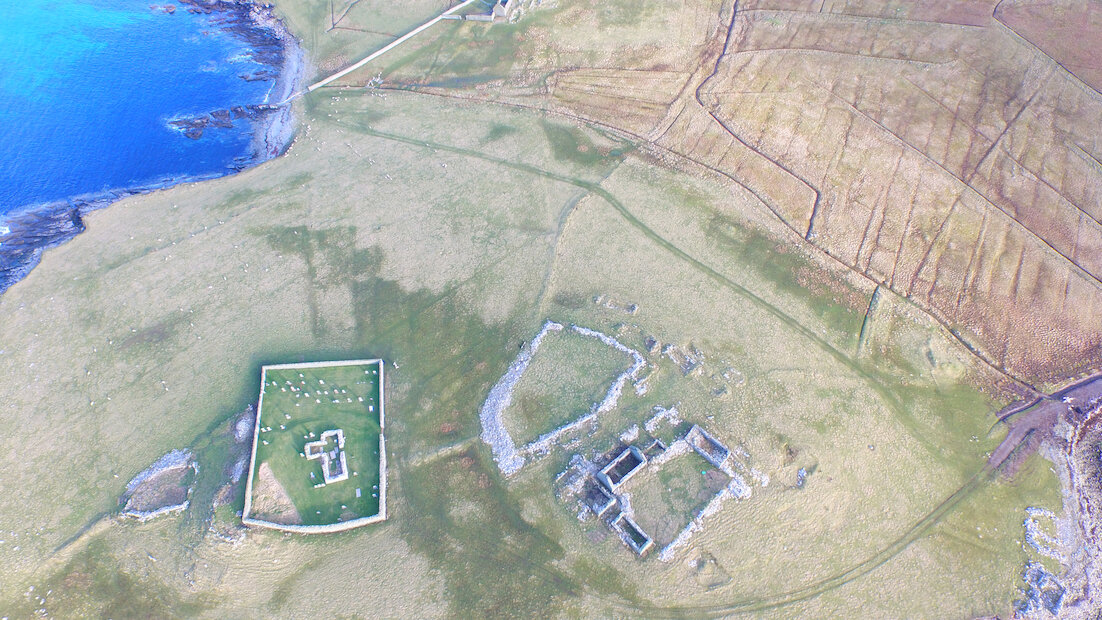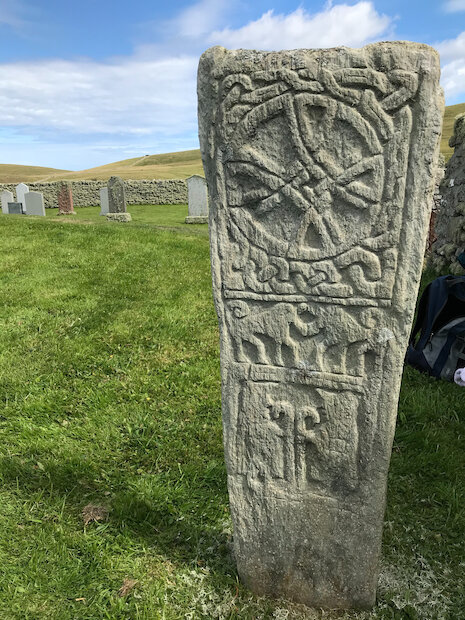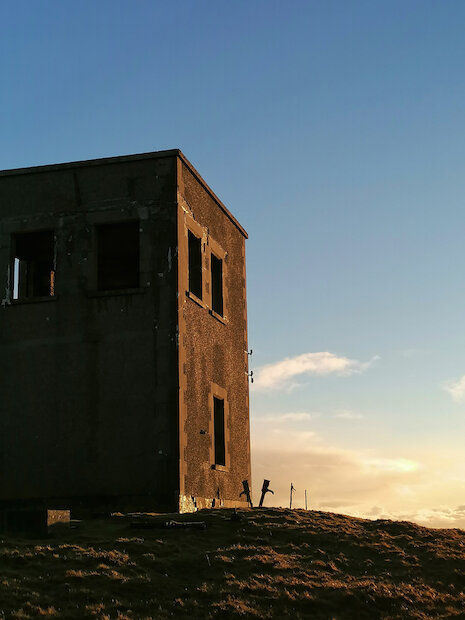The track heads in a gently sinuous fashion adjacent to the coastline, periodic storms depositing huge stones and concentrations of seaweed. The view to the north opens seaward towards the island of Whalsay and to the west the Aith Ness peninsula in Bressay. The latter is surmounted with an in situ Great War artillery gun (another fantastic walk!), defending the approaches to Lerwick Harbour.
The outcropping bedrock is an aesthetically pleasing uniform Devonian Old Red sandstone, a mere 380 million years old, the sedimentary nature of which was wholly beneficial in terms of fashioning into the building blocks of post-medieval dwellings on the east side of Bressay and beyond. In addition, from this point, the nineteenth century quarries at Aith are visible, where extremely fine sandstone was extracted for the manufacture of roofing slate and flagstones across Shetland.
Upon arriving at the historic settlement of Cullingsbrough, the variety and density of remains is astounding, comprising a Bronze Age burnt mound, Iron Age broch, replica Pictish symbol stone, Viking and Norse structures, early Christian chapel, post-medieval croft houses alongside contemporary noosts – the Shetland dialect term for hollows, usually at the edge of a beach, where a boat is drawn up – and the foundation courses of a coastal böd – a fisherman’s hut.
A fascinating tale at the chapel relates to a substantial memorial stone complete with an elaborate crest. This references Claes Jansen Bruyn, Commander of the Amboina, a vessel of the Dutch East India Company which had sailed from the Indian Ocean in February 1636. Delay caused her to miss the Dutch convoy at the Cape of Good Hope and she left in May for a voyage of perilous headwinds and sadly disease amongst the crew. The Amboina arrived in Bressay Sound in August with a significant proportion of her crew perished. The survivors were offered shelter within Bressay whilst Commander Bruyn died on 27th August. The following year, a memorial stone was shipped from Holland to mark his grave.




